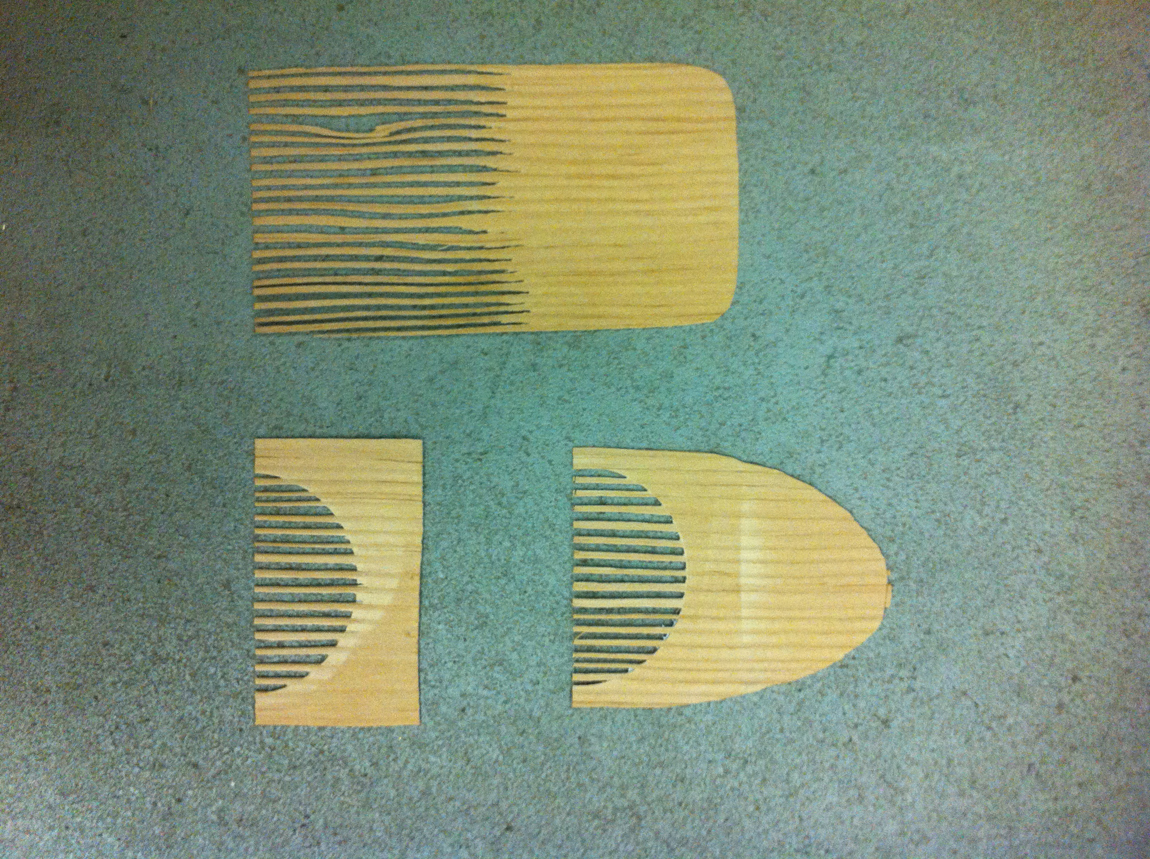Diptych
to Lex Pott’s windowDuring the tests I did last week, with which I tried to explore the many possibilities of sand blasting on wood, I stumbled upon two restrictions that we have to keep in mind during our future steps. Sand blasting opens up the woods' hidden layers by removing the soft, lighter annual rings, as the harder parts stay intact. As we concluded earlier, only certain types of wood will qualify for this project: a distinct contrast between hard and soft, light and dark is necessary for the best results.
My second finding was that I could only work the wood until a certain dept. By sand blasting deeper than approximately 1,5 centimeters, not only the softer rings would be eaten away; the darker parts will be damaged as well. By making use of these limitations, they pushed me a little more towards the final forms our project can take - it became clear that we would be searching in the direction of more or less two-dimensional shapes.

Test combs
One possible form revealed itself immediately during the tests, as if it was there all along: the fine lines of the harder layers started to resemble the teeth of a comb. While looking into the history of this specific item, it was great to find that throughout the centuries, the comb has been a prime example of an object fabricated by artisans to show off their craftsmanship and fine skills on a small scale. It is an ordinary but delicate item containing a certain elegance, in both its looks as its purpose: the private, attentive ritual of combing ones hair.
But most of all, it seems to be an object that can function as a diptych, showing the two chapters of the process. The grip of the comb embodies the raw, untouched state of a piece of wood - the wood as we all know it - while the teeth of the comb show the remaining structure and transparency after treating the wood. Nature and the influence of the human hand upon it joined together in a visual dialogue - certainly a surprising outcome that was hidden in the material itself. But this is just one of the shapes the wood could take, as its characteristics offer us much more to discover.
